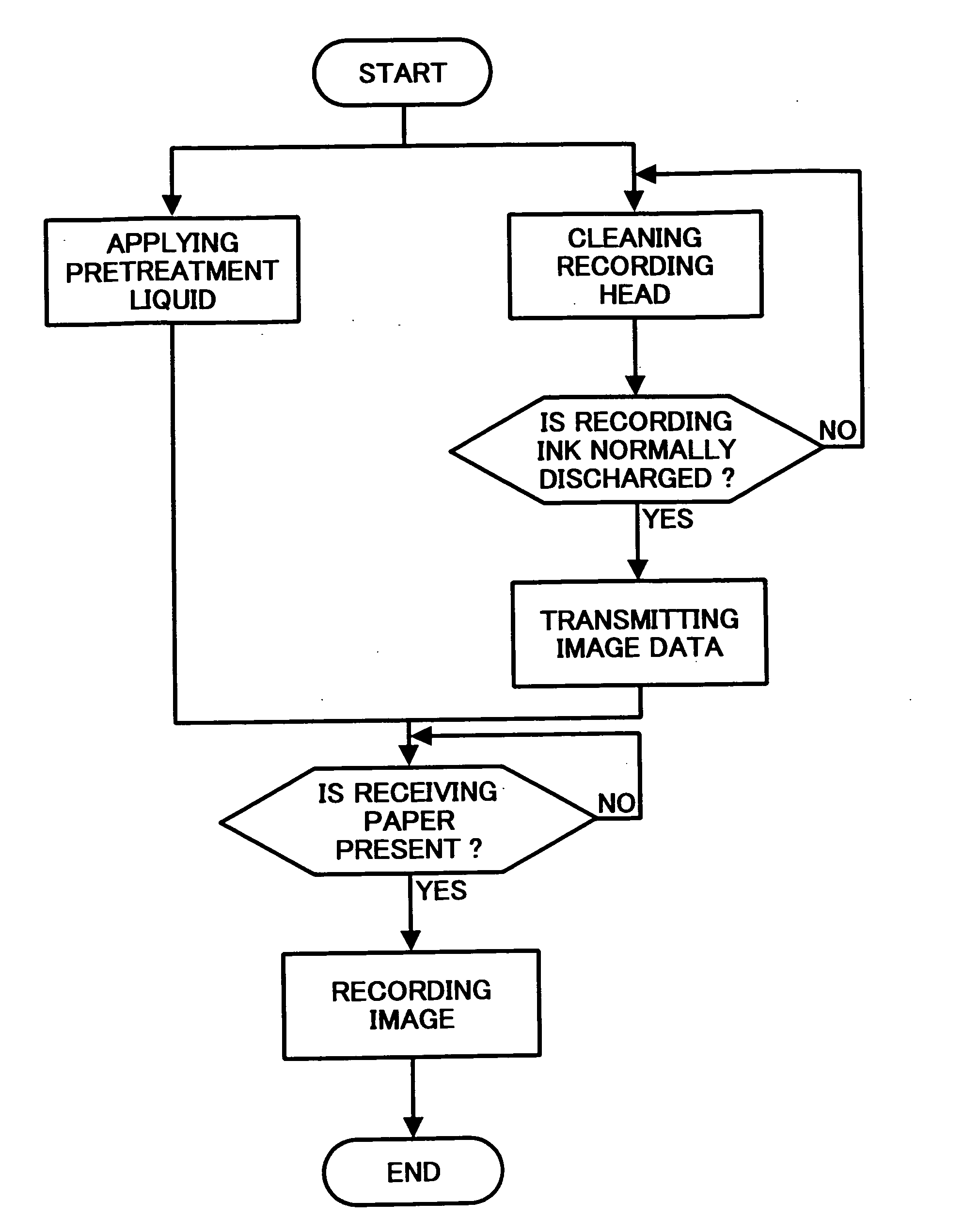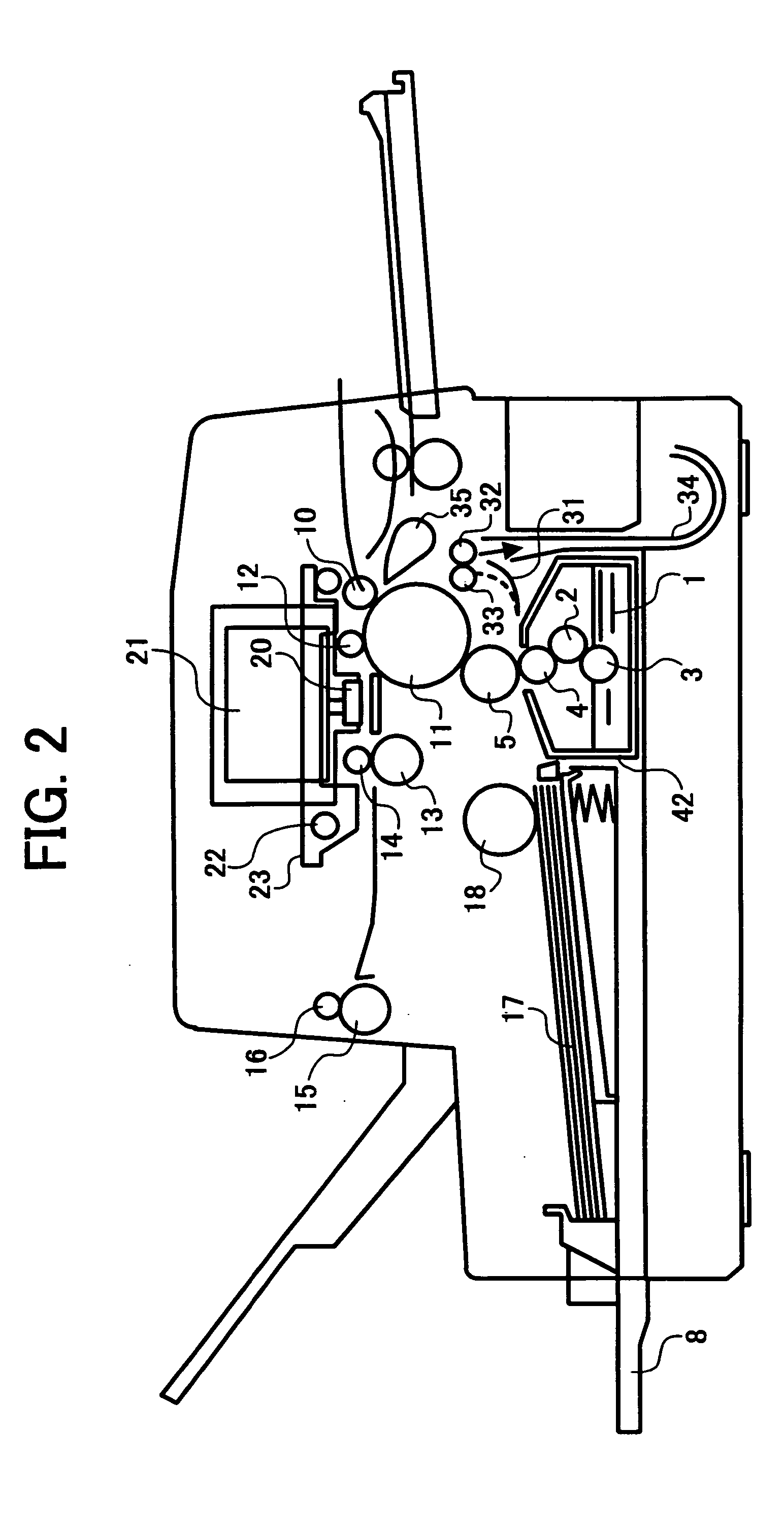Pretreatment liquid for recording material and image recording method using the pretreatment liquid
a technology of pretreatment liquid and recording material, which is applied in the direction of instruments, inks, transportation and packaging, etc., can solve the problems of feathering problem, character images and fine line images cannot be fully solved, and the water resistance of the typical color is poor, so as to achieve high water resistance
- Summary
- Abstract
- Description
- Claims
- Application Information
AI Technical Summary
Benefits of technology
Problems solved by technology
Method used
Image
Examples
example 1
Preparation of Recording Ink
The following components were mixed while being agitated. Then sodium hydroxide was added to the mixture to control the pH thereof so as to be 10.5. Then the mixture was filtered using a Membrane filter having openings of 0.1 μm in an average diameter. Thus yellow ink 1, magenta ink 1, cyan ink 1 and black ink 1 were prepared.
Formulation of Yellow Recording Ink 1
C.I. Acid Yellow 23 2%N-methyl-2-pyrrolidone10%Polyethylene glycol 20015%Diethyleneglycol monobutyl ether12%1,5-pentanediol 3%Sodium benzoate0.4% Deionized water57.6%
Formulation of Magenta Recording Ink 1
C.I. Acid Red 521.5%C.I. Acid Red 2541.5%N-methyl-2-pyrrolidone 10%Polyethylene glycol 200 15%Diethyleneglycol monobutyl ether 12%1,5-pentanediol 3%Sodium benzoate0.4%Deionized water56.6%
Formulation of Cyan Recording Ink 1
C.I. Acid Blue 91.5%Project Fast Cyan 2 (from Avecia)1.5%N-methyl-2-pyrrolidone 10%Polyethylene glycol 200 15%Diethyleneglycol monobutyl ether 12%1,5-pentanediol 3...
reference example 1
The procedures for the image formation and evaluation of image qualities in Example 1 were repeated except that the coating weight of the pretreatment liquid 1 applied to the recording papers was increased by changing the rotation speed of the thickness controlling roller 2 and the pressure applied between the thickness controlling roller 2 and the other rollers.
The coating weight of the pretreatment liquid 1 applied to the recording material was 10.3 g / m2. The results are shown in Table 1. As can be understood from Table 1, when the application quantity of the pretreatment liquid is greater than 10 g / m2, serious cockling occurs. In addition, when an image was formed on one side of a recording paper, the recording paper was seriously curled.
example 2
Preparation of Pretreatment Liquid 2
The following components were mixed while agitating. Lithium hydroxide was added to the mixture to control the pH of the mixture so as to be 7. Thus a pretreatment liquid 2 was prepared.
Formulation of Pretreatment Liquid 2
Cationic polymer having formula (7)15%(having a counter ion of Cl−, andweight average molecular weight of 3,500)Cationic compound having formula (32) 3%(having a counter ion of Cl−)Glycerin20%N-methyl-2-pyrrolidone20%1,6-hexanediol15%Sodium dehydroacetate 1%Deionized water26%
The viscosity of-the pretreatment liquid 2, which was measured with a type-B viscometer, was 850 mPa·s at 25° C.
Application of the Pretreatment Liquid and Image Formation
The container 42 of the image recording apparatus as illustrated in FIG. 1 was filled with thus prepared pretreatment liquid 2. When the pretreatment liquid 2 was applied on the copy paper and bond paper at a feeding speed 60 mm / s, the coating weight of the pretreatment liquid 2 app...
PUM
| Property | Measurement | Unit |
|---|---|---|
| Temperature | aaaaa | aaaaa |
| Fraction | aaaaa | aaaaa |
| Fraction | aaaaa | aaaaa |
Abstract
Description
Claims
Application Information
 Login to View More
Login to View More - R&D
- Intellectual Property
- Life Sciences
- Materials
- Tech Scout
- Unparalleled Data Quality
- Higher Quality Content
- 60% Fewer Hallucinations
Browse by: Latest US Patents, China's latest patents, Technical Efficacy Thesaurus, Application Domain, Technology Topic, Popular Technical Reports.
© 2025 PatSnap. All rights reserved.Legal|Privacy policy|Modern Slavery Act Transparency Statement|Sitemap|About US| Contact US: help@patsnap.com



